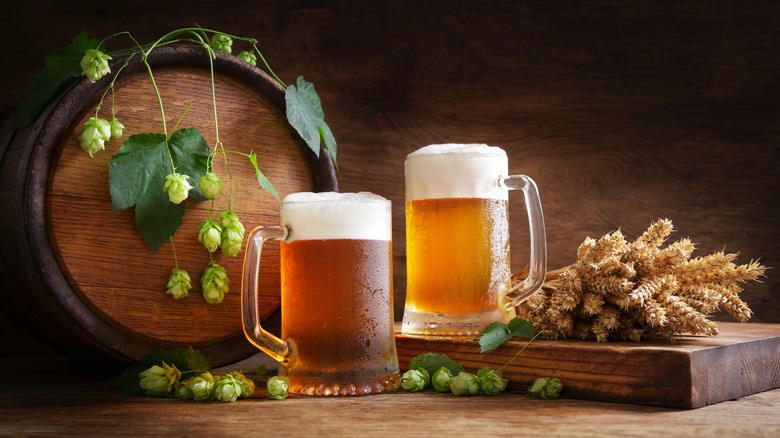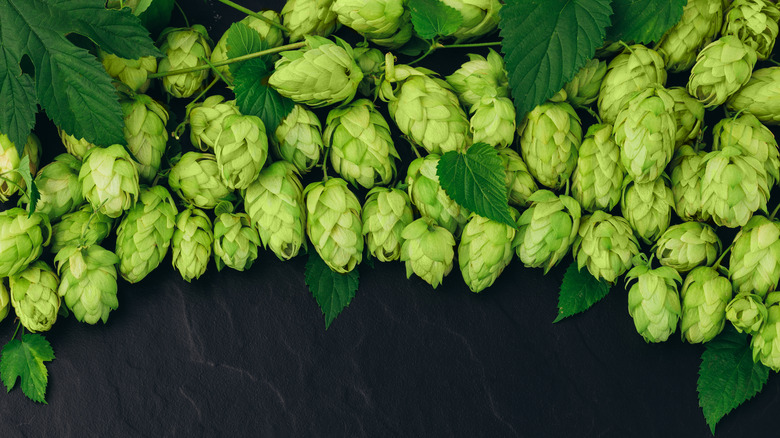The Historic Difference Between Ale And Beer
The transition to the legal drinking age can be an overwhelming one. You're generally discouraged from learning about alcoholic beverages throughout childhood. Then, suddenly, you turn 21 (or whatever the legal drinking age is in your country), and you're ordering a drink at the bar, where you may feel like a fish out of water in your knowledge of mixology. Nobody really takes the time to teach you the ins and outs of hard drinks — unless you go to bartending school. Instead, you must find your way through the wide world of liqueurs, spirits, and wines.
So, you start with something classic: beer. Or is it ale? What's the difference? And how does lager factor into this? Beer is a broad category for drinks resulting from fermenting grain with yeast. Ale and lager are the two most common subcategories falling under that umbrella of beer. Yet, confusingly, lager can be used as a synonym for beer (via Delighted Cooking). Well then, that brings us back to our original question: What is the difference between beer/lager and ale?
Definitions change but flavors still stay the same
According to Advanced Mixology, it comes down to yeast, although the taste and other considerations come into play. For ales, top-fermenting yeast is utilized in warmer environments. They often end up looking cloudy and dark, with fruity flavors, as well as strong bodies and fragrances. For lagers, bottom-fermenting yeast is used in cooler environments. They usually appear clearer, with a light and crisp taste that is neither too sweet nor bitter. On average, ales are somewhat higher than lagers in alcoholic and caloric content.
This hasn't always been true. To understand the historical difference, you first need to know what hops are. Responsible for the bitter taste and smell of beer, hops are harvested from flowers of the Humulus lupulus plant, per Sierra Nevada. Unlike lagers, hops weren't originally used to make ale. Delighted Cooking says that hops increased in popularity over time to the point that they were even included in ales, making this initial distinction defunct. In the modern era, hops have become abundant in ales thanks to the craft beer movement, per Smithsonian Magazine. As early as the 18th century, pale ales, including hops, were brewed by Brits because they made ale longer-lasting.
If you're ordering a beer at a bar, you now know what to expect — you can order confidently. The only thing sweeter than that (or more bitter if that's what you prefer) is the satisfaction of historical knowledge. Now you too can explain how ale came to be!

